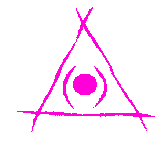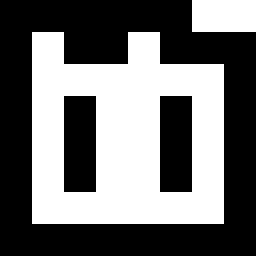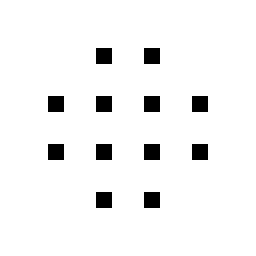
ILLUMINATI NORTH
BooBoo

BooBoo's game engine (Shim) is lightning fast and efficient, and the BooBoo language's performance is adequate for games of any scale.
The download also includes a CLI version of BooBoo that supports text colour changes and unbuffered input, for making console games, apps and tests.
With the source code, you can do things like enable Steam achievements by adding an interface to the included Shim library's Steam support, use the BooBoo library to script your game/app in BooBoo or add extra instructions to BooBoo. You can also use it on Linux.
A BooBoo game is fully contained in a data/ directory or data.cpa archive (which can be created with the included compress_cpa tool.) Placing your data/ directory or data.cpa alongside the BooBoo executable (in place of the default data/ directory, which contains the launcher) will make it launch automatically when the EXE is clicked. You can also rename the exectuable to suit the name of your game. This gives you the ability to distribute a stand-alone game (BooBoo.exe, SDL2.dll and data.cpa, plus anything else you want to include with your game.) data.cpa archives keep all your files in one place, compress your files and they also load faster. data.cpa archives are loaded into memory at startup and files are loaded directly from memory instead of disk.
I built BooBoo after developing engines for around 2 dozen games (before being satisfied with one, which is what backs BooBoo,) and co-designing and developing the API for Allegro 5 (a game library written in C.) Extensive experience has gone into the design of the BooBoo API, and the code behind it. I was a game developer, primarily. I built engines to make games, and didn't want to spend the extra years perfecting an engine, which is difficult to make suitable for a large amount of games. Eventually, whether conscious of it or not, I spent 3-4 years on Shim, and version 5 is what BooBoo is using behind the scenes. If you'd like to use Shim with C++ directly, you can do that using the code downloads (unfortunately as I'm a solo dev, Shim is still undocumented, but the minimal example and some common sense (and header exploration) is all you should need.)
Media
BooBoo comes with a plethora of examples. Here are a few of the example games...
Documentation
Read the documentation here...
Example
Here is Pong in BooBoo:
; Get the default screen size - that's what we'll use
number SCR_W SCR_H
get_buffer_size SCR_W SCR_H
; All of these numbers define the game, from sizes of ball and paddles, to positions and speeds
number PAD_H PAD_W BALL_SIZE BOTTOM score1 score2
number pad1y pad2y ballx bally balldx balldy
number BALL_SPEED PAD_SPEED GUTTER
; Set these values to defaults
= BOTTOM 50 ; 50 pixels at the bottom of the screen for score
= PAD_H (/ (- SCR_H BOTTOM) 8) ; paddle height (1/8th of the screen)
= PAD_W (/ PAD_H 3) ; paddle width
= BALL_SIZE (/ PAD_H 2.5) ; ball size
= score1 0 ; default scores
= score2 0
= pad1y (- (/ (- SCR_H BOTTOM) 2) (/ PAD_H 2)) ; position paddles in the middle
= pad2y pad1y
= BALL_SPEED 2.0 ; default speeds
= PAD_SPEED 3.5
= GUTTER 15 ; space between edge and paddle
; Set the ball moving left/right randomly
call randballdir
; Load a font
number font
font_load font "font.ttf" 24 1
; This places the ball in the middle and sets it moving randomly up/down/left/right
function randballdir
{
; Position the ball in the centre
= ballx (- (/ SCR_W 2) (/ BALL_SIZE 2))
= bally (- (/ (- SCR_H BOTTOM) 2) (/ BALL_SIZE 2))
; Generate random numbers between 0 and 1
number r1 r2
rand r1 0 1
rand r2 0 1
; Changes 0s to -1s
if (== r1 0) negr1
= r1 -1
:negr1
if (== r2 0) negr2
= r2 -1
:negr2
; Set the ball velocity
= balldx (* r1 BALL_SPEED)
= balldy (* r2 BALL_SPEED)
}
function run
{
; Move the ball
+ ballx balldx
+ bally balldy
; Bounce the ball off walls and assign score if it hits the far left/right
if (< ballx 0) posx (< bally 0) posy (>= (+ ballx BALL_SIZE) SCR_W) negx (>= (+ bally BALL_SIZE) (- SCR_H BOTTOM)) negy
neg balldx
+ score2 1
:posx
neg balldy
:posy
neg balldx
+ score1 1
:negx
neg balldy
:negy
; Read the keyboard
number kq ka ko kl
key_get kq KEY_q
key_get ka KEY_a
key_get ko KEY_o
key_get kl KEY_l
; Move paddles based on keys
if (&& (> pad1y 0) (== kq TRUE)) p1up (&& (< pad1y (- SCR_H BOTTOM PAD_H)) (== ka TRUE)) p1dn (&& (> pad2y 0) (== ko TRUE)) p2up
(&& (< pad2y (- SCR_H BOTTOM PAD_H)) (== kl TRUE)) p2dn
- pad1y PAD_SPEED
:p1up
+ pad1y PAD_SPEED
:p1dn
- pad2y PAD_SPEED
:p2up
+ pad2y PAD_SPEED
:p2dn
; Change ball direction based on paddles
number collides
call_result collides ball_collides GUTTER pad1y
if (== TRUE collides) hitpad1
neg balldx
= ballx (+ GUTTER PAD_W)
:hitpad1
call_result collides ball_collides (- SCR_W GUTTER PAD_W) pad2y
if (== TRUE collides) hitpad2
neg balldx
= ballx (- SCR_W GUTTER PAD_W BALL_SIZE)
:hitpad2
}
function draw
{
; Draw left paddle
filled_rectangle 255 255 255 255 255 255 255 255 255 255 255 255 255 255 255 255
GUTTER pad1y PAD_W PAD_H
; Draw right paddle
filled_rectangle 255 255 255 255 255 255 255 255 255 255 255 255 255 255 255 255
(- SCR_W GUTTER PAD_W) pad2y PAD_W PAD_H
; Draw ball
filled_rectangle 255 255 255 255 255 255 255 255 255 255 255 255 255 255 255 255
ballx bally BALL_SIZE BALL_SIZE
; Draw a line and the score below
line 255 255 255 255 0 (- SCR_H BOTTOM) SCR_W (- SCR_H BOTTOM) 2
string sc1 sc2
number sc2w fh
= sc1 score1
= sc2 score2
font_width font sc2w sc2
font_height font fh
font_draw font 255 255 255 255 sc1 GUTTER (- (+ (- SCR_H BOTTOM) (/ BOTTOM 2)) (/ fh 2))
font_draw font 255 255 255 255 sc2 (- SCR_W GUTTER sc2w) (- (+ (- SCR_H BOTTOM) (/ BOTTOM 2)) (/ fh 2))
}
; Returns TRUE/FALSE depending if the ball collides with paddle at padx/pady
function ball_collides padx pady
{
number bx2 by2
= bx2 (+ ballx BALL_SIZE)
= by2 (+ bally BALL_SIZE)
number px2 py2
= px2 (+ padx PAD_W)
= py2 (+ pady PAD_H)
if (|| (>= ballx px2) (>= bally py2) (< bx2 padx) (< by2 pady)) nope ; basic bounding box collision detection
return FALSE
:nope
return TRUE
}
AshEdit
 AshEdit can be used to take advantage of BooBoo's tilemap features. Various styles of 2D tile-based games are supported. Regions can be marked with user-defined integers or bitfields, to mark those "question blocks" in your platformer or chests in your JRPG. Solid/walkable flags can be set, and in the inevitable case where you need to move things around and between layers, there are multiple tools to do the job.
AshEdit can be used to take advantage of BooBoo's tilemap features. Various styles of 2D tile-based games are supported. Regions can be marked with user-defined integers or bitfields, to mark those "question blocks" in your platformer or chests in your JRPG. Solid/walkable flags can be set, and in the inevitable case where you need to move things around and between layers, there are multiple tools to do the job.
AshEdit has a full suite of tools for creating and editing layered maps, from rich selections to macro recording.
You draw a "collage" of tiles in your favourite paint program (using the transparent colour where you want transparency) and paint with them using the pencil tool in AshEdit. Multiple tile sheets are supported. Tiles can be any size (just set it in the File menu) and you can select and paint with any rectangular region of tiles. The tile sheets can be edited in your paint program and reloaded in AshEdit with a click in the File menu.
Binary maps can be loaded and saved (and used with BooBoo) and pixel-for-pixel screenshots of the entire map can be saved (optionally with some layers turned on/off.)
All of this information is available to BooBoo games, which can also do modifications to the tilemap live. BooBoo is able to draw a slice of layers (or all layers) with one command that automatically culls invisible tiles for optimal speed.
Media

License
Copyright 2025 ILLUMINATI NORTH Redistribution and use in source and binary forms, with or without modification, are permitted provided that the following conditions are met: 1. Redistributions of source code must retain the above copyright notice, this list of conditions and the following disclaimer. 2. Redistributions in binary form must reproduce the above copyright notice, this list of conditions and the following disclaimer in the documentation and/or other materials provided with the distribution. 3. Neither the name of the copyright holder nor the names of its contributors may be used to endorse or promote products derived from this software without specific prior written permission. THIS SOFTWARE IS PROVIDED BY THE COPYRIGHT HOLDERS AND CONTRIBUTORS "AS IS" AND ANY EXPRESS OR IMPLIED WARRANTIES, INCLUDING, BUT NOT LIMITED TO, THE IMPLIED WARRANTIES OF MERCHANTABILITY AND FITNESS FOR A PARTICULAR PURPOSE ARE DISCLAIMED. IN NO EVENT SHALL THE COPYRIGHT HOLDER OR CONTRIBUTORS BE LIABLE FOR ANY DIRECT, INDIRECT, INCIDENTAL, SPECIAL, EXEMPLARY, OR CONSEQUENTIAL DAMAGES (INCLUDING, BUT NOT LIMITED TO, PROCUREMENT OF SUBSTITUTE GOODS OR SERVICES; LOSS OF USE, DATA, OR PROFITS; OR BUSINESS INTERRUPTION) HOWEVER CAUSED AND ON ANY THEORY OF LIABILITY, WHETHER IN CONTRACT, STRICT LIABILITY, OR TORT (INCLUDING NEGLIGENCE OR OTHERWISE) ARISING IN ANY WAY OUT OF THE USE OF THIS SOFTWARE, EVEN IF ADVISED OF THE POSSIBILITY OF SUCH DAMAGE.
Downloads


Also available: Windows dependencies for the code (7 MB)